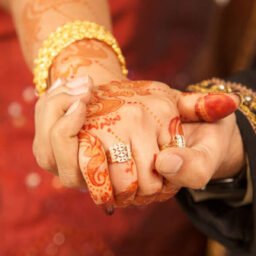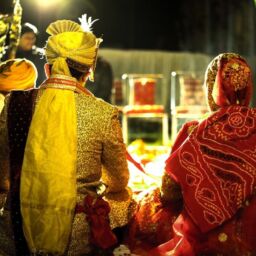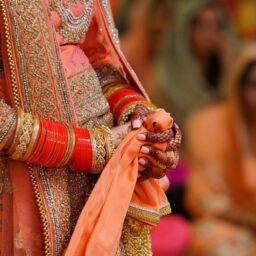INTRODUCTION
Marriage is considered as a sacramental union, and it confers the status of husband and wife on the parties to the marriage. According to Manu, it is considered a permanent union. However, as society has developed. Its views have also changed. In 1955, Hindu Marriage Act was passed under which marriage was a sacrament as well as a social contract[1]. Under this act, marriage could be terminated at the will of the parties or a petition for restitution of conjugal rights can be filed[2]. Such reliefs are known as matrimonial relief. Remedies[3] are available to both the partner, although subjected to few bars.
WHAT ARE BARS TO MATRIMONIAL RELIEF?
“Nobody is allowed to take advantage of his own wrong”—J. Chandrachud
Before any relief is granted by the court to the petitioner, he/she must prove the fault of the respondent and make sure that there are no bars to such relief. If any relief is granted which is in contempt to clause (a) to (e) of Section 23(1) of Hindu Marriage Act, 1955 (HMA), then it’s destined to be quashed. Section 23(1) deals with the following bars:
- Accessory
- Connivance
- Condonation
- Collusion
- Delay
- Any other legal grounds
THE DOCTRINE OF STRICT PROOF AND BURDEN OF PROOF (BOP)
Matrimonial proceedings are civil in nature. Here, the doctrine of strict proof is recognized[4]. Just like any civil case, after the receipt of summons by the respondent, there can be three situations that can arise.
- If the respondent fails to show up at the proceedings, the court might proceed in his absence.(i.e. Ex-parte proceedings).
- If the respondent admits guilt at the proceedings.
- If the respondent contests the claims made by the plaintiff.
- According to the doctrine of strict proof, the petitioner must prove his case beyond any reasonable doubt[5]. Hence, BOP is on the petitioner.
In Dastane v. Dastane 1975 SCC (2) 326, Chandrachud, J. held that “the standard of proof doesn’t need to be beyond all reasonable doubts as matrimonial cases are civil and not criminal. In modern matrimonial law, more emphasis is on the fact as to whether a marriage has broken down or not rather than on the guilt or innocence of the parties”.
TAKING ADVANTAGE OF ONES OWNS WRONG OR DISABILITY
These bars on matrimonial relief are based on the Doctrine of ‘Equity’ which means “one who comes to equity must come with clean hands”.
- In every petition for any matrimonial relief, the burden of proof is on the petitioner.
- He/she has to prove that relief is not sought to take any advantage of his/her wrongdoing.
- To succeed a petition must be bona fide and if filed with an ulterior motive then it cannot succeed.
For example- If a petitioner has been constantly cruel to his wife which resulted in her desertion. Later, the husband files for divorce under S.13 on the ground of desertion. Then such relief cannot be granted to the petitioner. Because the petitioner was responsible for driving out his wife and the court will not grant him any relief as he is not allowed to take benefit for his wrongdoings.
1. Accessory [S.23(1)(a), HMA, 1955]
Accessory is a term of criminology. In matrimonial cases, if the petitioner is somehow helping or not even trying to stop the respondent from performing any of the immoral acts then no relief can be sought. Here, the petitioner is acting as an accomplice in the commission of the crime. It mostly applies in cases of adultery[6].
For example- If a husband works as a pimp and brings people for having intercourse with his wife or if he let his wife commit adultery without any reservations then he is acting as an accessory.
2. Connivance [S.23(1)(b), HMA, 1955]
- It is similar to accessory and based on the maxim of equity.
- It is derived from the Latin word ‘connive’ which means ‘to wink at’.
The basic distinction between accessory and connivance:-
- In accessory, the petitioner is as guilty as the respondent owing to his/her involvement but there is no involvement of the petitioner in case of connivance.
- In its essence connivance precedes the matrimonial offence.
- Spying on the spouse to confirm his/her suspicion doesn’t amount to connivance.
For example- If a respondent proposes to the petitioner that she can make money by illicit intercourse and the wife agrees to the proposal, then the husband is guilty of connivance, even though he hasn’t participated in any way.
3. Condonation [S.23(1)(b), HMA, 1955]
If relief is sought on the ground of cruelty or adultery, then the court is required, under Section 23(1)(b) of HMA, to make sure that the offence hasn’t been condoned by the petitioner for which petition has been filed.
- It does not apply to any other matrimonial offences.
- Condonation has not been defined under the act. It means ‘erasing out’.
Condonation = Forgiveness + Restoration of status quo ante
- Mere forgiveness doesn’t amount to condonation; it completes when both of the parties agree to forgive each other and starts cohabitation[7]. Also, the offended spouse should have a complete understanding of the events.
In Chandra v. Avinash 1967 SC 581, the apex court held that:-
“…resumption of cohabitation and marital intercourse after full knowledge of the respondent’s adultery may amount to condonation. A singular act of intercourse would not amount to an indisputable presumption of condonation”.
In Dastane v. Dastane [8], the husband petitioned for divorce on the ground of the wife’s cruelty. “It was established that after the alleged acts of cruelty, parties continued cohabitation and during the period a daughter was born to them”. The Court further said, “…normally, sexual intercourse is the evidence of both forgiveness and reconciliation and raises a presumption of condonation”
Revival of Condoned Offence:-
- In the court of law, it is believed that once acts are condoned then there is no going back.
- However, there is an obvious condition that the spouse will not repeat such an offence ever again or commit any other matrimonial offence or will be involved in any of the matrimonial misconduct.
- If he/she breaks such promise then condoned offence will revive[9].
4. Collusion [S.23(1)(c), HMA, 1955]
Collusion may be defined as an agreement between the parties whereby matrimonial relief is desired to be obtained by deceiving the court by misrepresentation, exaggeration or suppression of facts or cooking up of false evidence.
- Collusion is an absolute bar. It applies to all other matrimonial relief.
- Exception- Divorce by mutual consent does not amount to collusion[10].
- The court must investigate and make sure that there is no collusion between the parties. Petitioner has to prove (BOP) that there is no collusion.
- An excellent illustration of collusion in English law is Hotel Bill Cases[11].
For example- If the husband is agreeing to an unusual amount of maintenance to his wife, just to make sure that she may agree to divorce. In the following case, it is crucial to demonstrate the purpose, it might be to pervert the course of justice, and then it would amount to collusion.
5. Delay [S.23(1)(d), HMA, 1955]
It is quite normal to have delays but we have to make sure that they are not unnecessary[12]. There is no fixed or prescribed period to file for any matrimonial relief.
- Under this bar, the Principle of laches applies; the court needs to make sure that “there has not been any unnecessary or improper delay in the instituting proceeding”. Delay might indicate a sense of injury is wanting.
- Like in other bars, Petitioner has to prove whether the delays are not intentional or improper.
5. Other Legal Grounds [S.23(1)(e), HMA, 1955]
- This sub-clause contains a residue bar. It implies that no decree for any relief can be passed if there is any other legal ground that restricts any matrimonial relief. This clause has not yet been interpreted by the courts.
- According to Mulla’s Hindu Law, this clause was added as ex abundanti coutela means “out of abundant caution”. It only deals with the grounds that are already mentioned in various provisions of the act.
CONCLUSION
Marriage is a very complex and delicate institution. The courts have to be very careful before granting any of the matrimonial reliefs. Section 23 provides bars in the grant of matrimonial remedies to the petitioners who try to take benefit of their wrongdoing, condoned, collusion with their spouse, and caused unnecessary delay in the filing of a petition. These bars work as a refinery by rejecting the fraud cases and helps in providing a speedy trial for the genuine matrimonial cases. They help in eliminating the devious or cases that are filed to take revenge on the spouse.
Author(s) Name: Arun Shekhar Jawla (Chandigarh University, Punjab)
References:
[1] Bhagwati Saran Singh v. Parmeshwari Nandar Singh, (1942 ILR All. 518)
[2] Section 9 of Hindu Marriage Act, 1955
[3] Section 23(1) of Hindu Marriage Act, 1955
[4] Pg.199, 24th Edition- Modern Hindu Law, Dr. Paras Diwan
[5] Sachindra v. Nilima, 1970 Cal 348
[6] Section 13(1)(i) of Hindu Marriage Act, 1955
[7] Moreno v. Moreno, 1920 Cal 439
[8] 1970 Bom 312.
[9] Ganta v. Lamta, 1992 AP 76
[10] Section 13B of Hindu Marriage Act, 1955
[11] Pg.206, 24th Edition- Modern Hindu Law, Dr. Paras Diwan
[12] Rama v. Krishnasami, (1972) MLJ 203















